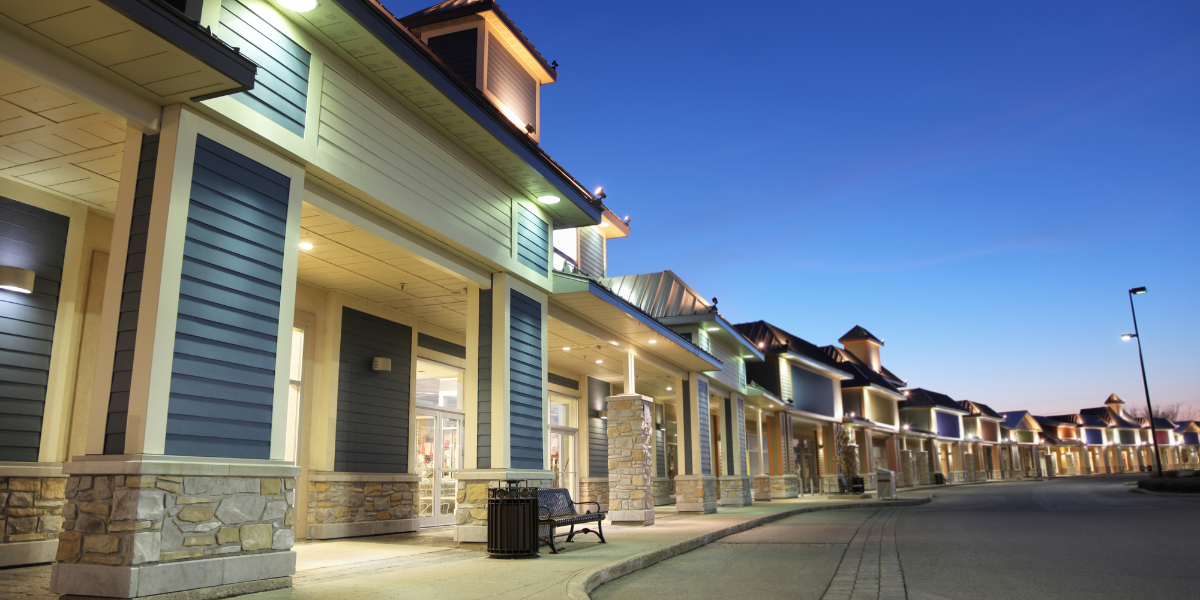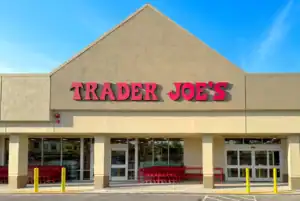
Photo: Canva
October 20, 2023
Should Retailers Turn Off the Lights When Not Open?
Last week, France’s government said it would start fining businesses €1,500 ($1,587) for lighting stores when they’re not open in a further effort to clamp down on energy usage for both cost and environmental reasons.
When stores aren’t open, France’s stores can only use lighting one hour before opening time and one hour after closing.
The steps supplement several measures taken last year across Europe to reduce heating and power use as energy prices soared to record levels due to Russian gas supply issues.
In Spain, laws were passed last year requiring lights in shop windows to be switched off at 10 p.m. In Germany, national energy saving measures arrived to restrict illuminated advertising, including lit-up store signs, after 10 p.m.
Last fall, French luxury giant LVMH began turning off the lighting at stores between 10 p.m. and 7 a.m. as part of a program to reduce annual energy consumption by 10% and meet its commitment to renewable or low-carbon energy.
While energy prices have stabilized, the measures continue as power bills remain elevated and retailers seek to make progress on decarbonization targets.
A survey early this year from GridPoint finds retailers and restaurants in North America focusing on energy-efficient technologies across lighting, heating, and refrigeration to reduce energy costs and their carbon footprint rather than executing operational changes, such as store lighting restrictions.
A recent Quora discussion, “Why do some shops keep their lights on at night even after they’ve closed?” identified security and advertising as two primary reasons lights remain on in the U.S. at many stores despite the potential energy savings.
Leaving the lights on at night was seen as a deterrent to burglars or vandals with passersby and police patrols able to spot suspicious activity. One respondent said, “Totally dark shops look closed or abandoned. This invites vandals and other undesirable malfeasance.” A few respondents also noted that security cameras can better record intruders with lighting.
Lit logo signs outside and lights inside of stores also work as advertising. At many locations, customers can window shop at night. One respondent said, “Even when closed, potential customers can still admire the goods and be more likely to visit the store at a later time.”
Many responses also noted that in some cases, the lights support overnight workers, including those restocking shelves, cleaning, and sometimes providing security.
Discussion Questions
Outside of the time spent restocking and cleaning, do you see enough reasons for stores to leave their lights on overnight? Do the benefits offset the monetary and environmental costs?
Poll
BrainTrust
Neil Saunders
Managing Director, GlobalData
Ananda Chakravarty
Vice President, Research at IDC
Jamie Tenser
Retail Tech Marketing Strategist | B2B Expert Storytelling™ Guru | President, VSN Media LLC
Recent Discussions







This discussion has two clear sides. One is environmental and cost, while the other is about advertising one’s wares while closed for business. It’s all about what are whose hot buttons plus an evolving culture that may value conservation over advertising including at the corporate business level. One must remember that many companies’ leadership is a whole generation younger with different values than its predecessor leaders and more sensitive to environmental issues. So, by the way, are the legislators imposing these restrictions. What is “the right thing” to do?
There are many ways that retailers can cut their environmental impact – and reduce their expenses – shutting off the lights is an easy one that virtually any retailer can do. Of course there are cases when the lights should stay on, but to a great extent, keeping the lights on is a waste of energy and money. The benefits related to energy savings and environmental impact far outweigh the benefits of leaving the lights on.
We have retailers who have enough experience now that they could address those security and advertising concerns – for the companies that are turning lights off, have they seen an increase in break-ins or a reduction in local sales? Data would be very helpful to this debate.
This seems like a long overdue modification to lighting practices. Keeping stores lit all night long seems like a big waste of energy. For retailers that are concerned with late night passerbys doing window shopping, they could install motion sensors that turn lights on for a minute or two when there is someone outside the store. This would also be a good solution to deter thieves.
Absent “data,” it’s almost impossible to say what the right answer is and given that governments tend to act without objective data particularly in these polarizing matters, it’s easy to be biased against the mandate (law). Therefore, absent objective data, it’s difficult to argue for a higher number of break-ins which increase societal costs (and anxiety) or for lowering the environmental impacts which is something we should all be doing as a matter of common sense. My hope continues to be that our need to do “something” doesn’t outweigh our need for those things to be the right things.
The French laws seem very heavy-handed and onerous. An hour before opening time – so if staff are in more than an hour before opening to do stocktake or something are they supposed to work by candlelight? An hour after closing does not take into account that people might still be socializing in the location long after closing. So much for Paris being the City of Light! I think the decision should be left to retailers and I think the standard they should adopt is one based on what works best for them depending on security, advertising, and local concerns.
France is on a tear on a whole bunch of these topics. After a time of focus on consumer protections around receipts – to make sure that consumers aren’t overcharged or whatever – they’re now also mandating an end to paper receipts. California is now facing pressure over the same quandary – paper receipts are required for consumer protections (I guess), and now there is a fight over whether to ban them over environmental concerns.
Good job France doesn’t have CVS and their mile long receipts!
No Neil, they’d have kilometres-long receipts ! Seriously tho, France has long had a notoriously centralized government (read: bureaucratic) Plus ça change…
I’m confused. While retailers leave their lights on you can’t really compare the brightness of after hours lighting with store hours lighting. I see nothing wrong with leaving the lights on low.
Situations vary, but not all the lights need to be kept on after closing, and not necessarily overnight. Lighting the store an hour before opening and an hour after closing is tough. When I ran stores staff stayed an hour after closing to straighten the floor, and managers often stayed later. And I was usually in the store two hours before opening each day to handle paperwork so I could be on the floor most of the day.
There are many reasons to leave the lights on, and not just to prevent crime. If the store is located in an area with high foot traffic at night leaving the windows and the front of the store lit makes sense to build business. At least until restaurant/bar closing time.
There is always a middle way and this is no exception. One can achieve the billboard effect of after hours visibility without lighting up the entire store. Light up a great window instead. Or put a QR code on the store window to offer a fabulous AR mobile experience to entice shoppers back when the store is open. And for theft prevention, I seem to recall this thing that’s been around for a decade called motion activated lighting. We are too focused on the extremes of the pendulum swing. The best things usually happen through compromise in the middle.
Thanks for mentioning “motion activated lighting” DeAnn. Security is an important reason to keep lights on in stores, but they don’t need to be full-blast 24/7 to be effective.
A bit surprised that this story doesn’t address other available lighting options, such as LED fixtures that use a fraction of the electricity. DeAnn’s comment regarding motion-sensing security lights is also very relevant here. The rules in France seem to focus on time of day/night rather than total energy usage. And reading between the lines there seems to be an esthetic consideration in play.
As a resident of southern Arizona, I’m a big advocate for “dark sky” practices that keep lights low at night. Retailers with brightly lit empty parking lots or exterior signs can take steps to power them down while still maintaining safe conditions.
Just got back from a backpacking trek in our SoCal deserts where “dark skies” rule…amazing!!!
Ultimately, this needs to be up to retailers and their landlords, not the government (unless there are conflicting issues such as flight path or wartime). But at closing, store owners and landlords can always be taking reasonable steps to dim or cut a percentage of the brighter lights they don’t need to operate the business, or to deter crime.
For France, energy usage is a point of revenue not cost savings. France operates over 50 nuclear reactors and has been an electricity exporter for decades. Given the considerations of limited energy sources in nearby Ukraine and adjacent nations that would be purchasing French electricity, it is a reasonable course of action to save energy for profit.
The answer to this question is highly localized and dependent on crime rates, demographics, surrounding properties and more. These shouldn’t be national mandates but municipal ones. There are towns in the US that have actively reduced lighting on highway strips so they could meet tax and budget obligations. It wouldn’t make much sense to worry about store crime in a highly lit neighborhood next to a police station, just as it wouldn’t make sense to consider advertising in a rural gas station on a long Iowa farm road.
Context determines the value, and hence localization is the only way to make such a decision, blanket policies will be wasteful.
Do the benefits offset the monetary and environmental costs?
Is anyone better quaified to answer this question than the retailers themselves ?? (And by implication is anyone less qualified that we here at RW?) This would seem to fall under the category of MYOB; if it’s seen as a public policy issue – and Europe’s energy situation (post Ukraine) might qualify – there are probably better ways to handle it than micromanaging the on/off switch. Vive La France ?? Mais, non.
Seems like there can be a middle ground here – leave some of the lights on! Some lights still help with security issues and promotional aspects, while reducing power consumption. Not to mention motion lights can provide a good solution too. Not sure there is a “right” solution, but there are options.
Around Chicago suburbs, small stores and restaurants are dark when the store is open. Lights are off or very dim, including banks. I do not know why, except to save money/energy—. and lose business.